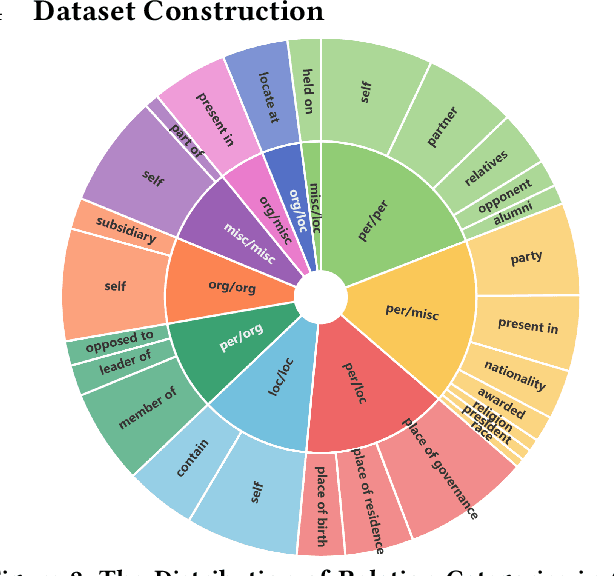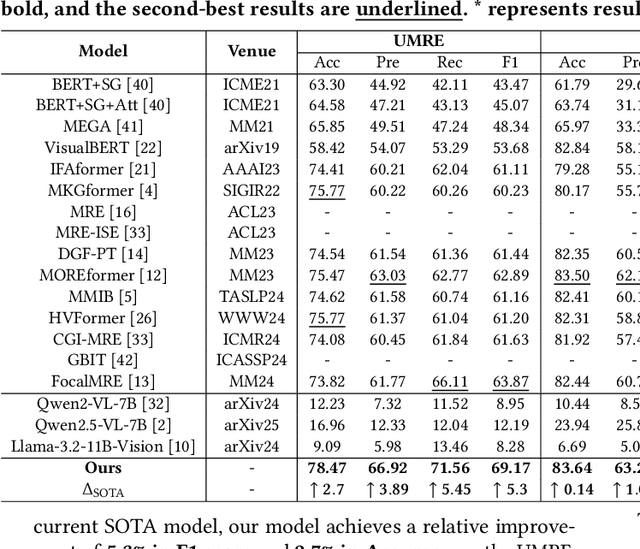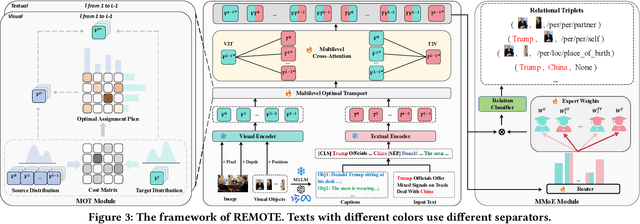Hao Xu
University of California San Diego, USA
Enhancing Large Language Model Reasoning with Reward Models: An Analytical Survey
Oct 02, 2025Abstract:Reward models (RMs) play a critical role in enhancing the reasoning performance of LLMs. For example, they can provide training signals to finetune LLMs during reinforcement learning (RL) and help select the best answer from multiple candidates during inference. In this paper, we provide a systematic introduction to RMs, along with a comprehensive survey of their applications in LLM reasoning. We first review fundamental concepts of RMs, including their architectures, training methodologies, and evaluation techniques. Then, we explore their key applications: (1) guiding generation and selecting optimal outputs during LLM inference, (2) facilitating data synthesis and iterative self-improvement for LLMs, and (3) providing training signals in RL-based finetuning. Finally, we address critical open questions regarding the selection, generalization, evaluation, and enhancement of RMs, based on existing research and our own empirical findings. Our analysis aims to provide actionable insights for the effective deployment and advancement of RMs for LLM reasoning.
Secure ISAC with Fluid Antenna Systems: Joint Precoding and Port Selection
Sep 30, 2025Abstract:This paper presents a novel framework for enhancing physical-layer security in integrated sensing and communication (ISAC) systems by leveraging the reconfigurability of fluid antenna systems (FAS). We propose a joint precoding and port selection (JPPS) strategy that maximizes the sum secrecy rate while simultaneously ensuring reliable radar sensing. The problem is formulated using fractional programming (FP) and solved through an iterative algorithm that integrates FP transformations with successive convex approximation (SCA). To reduce computational complexity, we further develop low-complexity schemes based on zero-forcing (ZF) precoding, combined with greedy port selection and trace-inverse minimization. Simulation results demonstrate substantial improvements in both secrecy performance and sensing accuracy compared to conventional baselines, across a wide range of FAS ports, user loads, and sensing targets. These findings highlight the critical importance of FAS geometry optimization in enabling secure and efficient joint communication-sensing for next-generation wireless networks.
Sensitivity-LoRA: Low-Load Sensitivity-Based Fine-Tuning for Large Language Models
Sep 11, 2025Abstract:Large Language Models (LLMs) have transformed both everyday life and scientific research. However, adapting LLMs from general-purpose models to specialized tasks remains challenging, particularly in resource-constrained environments. Low-Rank Adaptation (LoRA), a prominent method within Parameter-Efficient Fine-Tuning (PEFT), has emerged as a promising approach to LLMs by approximating model weight updates using low-rank decomposition. However, LoRA is limited by its uniform rank ( r ) allocation to each incremental matrix, and existing rank allocation techniques aimed at addressing this issue remain computationally inefficient, complex, and unstable, hindering practical applications. To address these limitations, we propose Sensitivity-LoRA, an efficient fine-tuning method that dynamically allocates ranks to weight matrices based on both their global and local sensitivities. It leverages the second-order derivatives (Hessian Matrix) of the loss function to effectively capture weight sensitivity, enabling optimal rank allocation with minimal computational overhead. Our experimental results have demonstrated robust effectiveness, efficiency and stability of Sensitivity-LoRA across diverse tasks and benchmarks.
AdsQA: Towards Advertisement Video Understanding
Sep 10, 2025Abstract:Large language models (LLMs) have taken a great step towards AGI. Meanwhile, an increasing number of domain-specific problems such as math and programming boost these general-purpose models to continuously evolve via learning deeper expertise. Now is thus the time further to extend the diversity of specialized applications for knowledgeable LLMs, though collecting high quality data with unexpected and informative tasks is challenging. In this paper, we propose to use advertisement (ad) videos as a challenging test-bed to probe the ability of LLMs in perceiving beyond the objective physical content of common visual domain. Our motivation is to take full advantage of the clue-rich and information-dense ad videos' traits, e.g., marketing logic, persuasive strategies, and audience engagement. Our contribution is three-fold: (1) To our knowledge, this is the first attempt to use ad videos with well-designed tasks to evaluate LLMs. We contribute AdsQA, a challenging ad Video QA benchmark derived from 1,544 ad videos with 10,962 clips, totaling 22.7 hours, providing 5 challenging tasks. (2) We propose ReAd-R, a Deepseek-R1 styled RL model that reflects on questions, and generates answers via reward-driven optimization. (3) We benchmark 14 top-tier LLMs on AdsQA, and our \texttt{ReAd-R}~achieves the state-of-the-art outperforming strong competitors equipped with long-chain reasoning capabilities by a clear margin.
REMOTE: A Unified Multimodal Relation Extraction Framework with Multilevel Optimal Transport and Mixture-of-Experts
Sep 05, 2025



Abstract:Multimodal relation extraction (MRE) is a crucial task in the fields of Knowledge Graph and Multimedia, playing a pivotal role in multimodal knowledge graph construction. However, existing methods are typically limited to extracting a single type of relational triplet, which restricts their ability to extract triplets beyond the specified types. Directly combining these methods fails to capture dynamic cross-modal interactions and introduces significant computational redundancy. Therefore, we propose a novel \textit{unified multimodal Relation Extraction framework with Multilevel Optimal Transport and mixture-of-Experts}, termed REMOTE, which can simultaneously extract intra-modal and inter-modal relations between textual entities and visual objects. To dynamically select optimal interaction features for different types of relational triplets, we introduce mixture-of-experts mechanism, ensuring the most relevant modality information is utilized. Additionally, considering that the inherent property of multilayer sequential encoding in existing encoders often leads to the loss of low-level information, we adopt a multilevel optimal transport fusion module to preserve low-level features while maintaining multilayer encoding, yielding more expressive representations. Correspondingly, we also create a Unified Multimodal Relation Extraction (UMRE) dataset to evaluate the effectiveness of our framework, encompassing diverse cases where the head and tail entities can originate from either text or image. Extensive experiments show that REMOTE effectively extracts various types of relational triplets and achieves state-of-the-art performanc on almost all metrics across two other public MRE datasets. We release our resources at https://github.com/Nikol-coder/REMOTE.
Explaining Black-box Language Models with Knowledge Probing Systems: A Post-hoc Explanation Perspective
Aug 23, 2025Abstract:Pre-trained Language Models (PLMs) are trained on large amounts of unlabeled data, yet they exhibit remarkable reasoning skills. However, the trustworthiness challenges posed by these black-box models have become increasingly evident in recent years. To alleviate this problem, this paper proposes a novel Knowledge-guided Probing approach called KnowProb in a post-hoc explanation way, which aims to probe whether black-box PLMs understand implicit knowledge beyond the given text, rather than focusing only on the surface level content of the text. We provide six potential explanations derived from the underlying content of the given text, including three knowledge-based understanding and three association-based reasoning. In experiments, we validate that current small-scale (or large-scale) PLMs only learn a single distribution of representation, and still face significant challenges in capturing the hidden knowledge behind a given text. Furthermore, we demonstrate that our proposed approach is effective for identifying the limitations of existing black-box models from multiple probing perspectives, which facilitates researchers to promote the study of detecting black-box models in an explainable way.
MeshCoder: LLM-Powered Structured Mesh Code Generation from Point Clouds
Aug 20, 2025Abstract:Reconstructing 3D objects into editable programs is pivotal for applications like reverse engineering and shape editing. However, existing methods often rely on limited domain-specific languages (DSLs) and small-scale datasets, restricting their ability to model complex geometries and structures. To address these challenges, we introduce MeshCoder, a novel framework that reconstructs complex 3D objects from point clouds into editable Blender Python scripts. We develop a comprehensive set of expressive Blender Python APIs capable of synthesizing intricate geometries. Leveraging these APIs, we construct a large-scale paired object-code dataset, where the code for each object is decomposed into distinct semantic parts. Subsequently, we train a multimodal large language model (LLM) that translates 3D point cloud into executable Blender Python scripts. Our approach not only achieves superior performance in shape-to-code reconstruction tasks but also facilitates intuitive geometric and topological editing through convenient code modifications. Furthermore, our code-based representation enhances the reasoning capabilities of LLMs in 3D shape understanding tasks. Together, these contributions establish MeshCoder as a powerful and flexible solution for programmatic 3D shape reconstruction and understanding.
Undress to Redress: A Training-Free Framework for Virtual Try-On
Aug 11, 2025Abstract:Virtual try-on (VTON) is a crucial task for enhancing user experience in online shopping by generating realistic garment previews on personal photos. Although existing methods have achieved impressive results, they struggle with long-sleeve-to-short-sleeve conversions-a common and practical scenario-often producing unrealistic outputs when exposed skin is underrepresented in the original image. We argue that this challenge arises from the ''majority'' completion rule in current VTON models, which leads to inaccurate skin restoration in such cases. To address this, we propose UR-VTON (Undress-Redress Virtual Try-ON), a novel, training-free framework that can be seamlessly integrated with any existing VTON method. UR-VTON introduces an ''undress-to-redress'' mechanism: it first reveals the user's torso by virtually ''undressing,'' then applies the target short-sleeve garment, effectively decomposing the conversion into two more manageable steps. Additionally, we incorporate Dynamic Classifier-Free Guidance scheduling to balance diversity and image quality during DDPM sampling, and employ Structural Refiner to enhance detail fidelity using high-frequency cues. Finally, we present LS-TON, a new benchmark for long-sleeve-to-short-sleeve try-on. Extensive experiments demonstrate that UR-VTON outperforms state-of-the-art methods in both detail preservation and image quality. Code will be released upon acceptance.
Guided Depth Map Super-Resolution via Multi-Scale Fusion U-shaped Mamba Network
Aug 01, 2025Abstract:Depth map super-resolution technology aims to improve the spatial resolution of low-resolution depth maps and effectively restore high-frequency detail information. Traditional convolutional neural network has limitations in dealing with long-range dependencies and are unable to fully model the global contextual information in depth maps. Although transformer can model global dependencies, its computational complexity and memory consumption are quadratic, which significantly limits its ability to process high-resolution depth maps. In this paper, we propose a multi-scale fusion U-shaped Mamba (MSF-UM) model, a novel guided depth map super-resolution framework. The core innovation of this model is to integrate Mamba's efficient state-space modeling capabilities into a multi-scale U-shaped fusion structure guided by a color image. The structure combining the residual dense channel attention block and the Mamba state space module is designed, which combines the local feature extraction capability of the convolutional layer with the modeling advantage of the state space model for long-distance dependencies. At the same time, the model adopts a multi-scale cross-modal fusion strategy to make full use of the high-frequency texture information from the color image to guide the super-resolution process of the depth map. Compared with existing mainstream methods, the proposed MSF-UM significantly reduces the number of model parameters while achieving better reconstruction accuracy. Extensive experiments on multiple publicly available datasets validate the effectiveness of the model, especially showing excellent generalization ability in the task of large-scale depth map super-resolution.
Multi-Scale Attention and Gated Shifting for Fine-Grained Event Spotting in Videos
Jul 10, 2025Abstract:Precise Event Spotting (PES) in sports videos requires frame-level recognition of fine-grained actions from single-camera footage. Existing PES models typically incorporate lightweight temporal modules such as Gate Shift Module (GSM) or Gate Shift Fuse (GSF) to enrich 2D CNN feature extractors with temporal context. However, these modules are limited in both temporal receptive field and spatial adaptability. We propose a Multi-Scale Attention Gate Shift Module (MSAGSM) that enhances GSM with multi-scale temporal dilations and multi-head spatial attention, enabling efficient modeling of both short- and long-term dependencies while focusing on salient regions. MSAGSM is a lightweight plug-and-play module that can be easily integrated with various 2D backbones. To further advance the field, we introduce the Table Tennis Australia (TTA) dataset-the first PES benchmark for table tennis-containing over 4800 precisely annotated events. Extensive experiments across five PES benchmarks demonstrate that MSAGSM consistently improves performance with minimal overhead, setting new state-of-the-art results.
 Add to Chrome
Add to Chrome Add to Firefox
Add to Firefox Add to Edge
Add to Edge